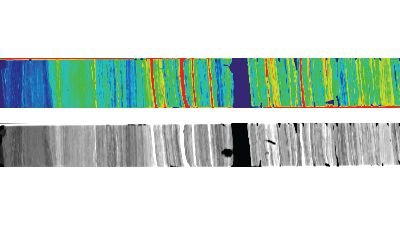Core-XCT: X-ray Computed Tomography as new tool in Earth Science for non-destructive core analyses
Funded by Nachwuchsförderung (NWF) – University of Innsbruck (2018-2019)
PI: Dr. Jyh-Jaan Huang

While traditional Earth-Science approaches typically apply physical and/or chemical analytical techniques, X-ray computed tomography (XCT) as widely used in modern Medicine and Diagnosis has only recently been identify as powerful tool to add quantitative 3D-morphometric information of core samples to study the archive of Earth history or its natural resources. An exciting new research field opens up when integrating these different methods, with the potential to eventually develop (semi-)automated diagnoses algorithms for the characterization of natural core samples. By combining the expertise and using the excellent infrastructure within the two Core Facilities (Scientific Core Analyses at the University of Innsbruck and MicroCT at the Medical University Innsbruck), the here proposed Core-XCT project will analyze scientific core samples retrieved from different settings by physical and chemical and XCT core scanning. The systematic comparison and optimization of the analytical procedures and results will test and eventually develop protocols and standard operation procedure for integrated fabric and compositional analyses of natural samples for Earth- and Environmental Science applications.
The results of this pilot project are expected to (i) deliver unprecedented insights into 3D microstructural details of natural core samples to help interpret past geological, climatic and/or environmental impacts; to (ii) provide proof-of-concept data and outline the potential pathways how future integrative 3D textural and compositional analyses applications may be used as diagnostic tool for core sample classification and interpretation, the elaboration and scientific application of is planned to be proposed as FWF research project within the next year.
Collaborators:
Dr. Jasper Moernaut
Advisory board:
Univ. Prof. Dr. Michael Strasser
PD Dr. rer.nat. Wolfgang Recheis (Universitätsklinik für Radiologie, Medical University of Innsbruck)
